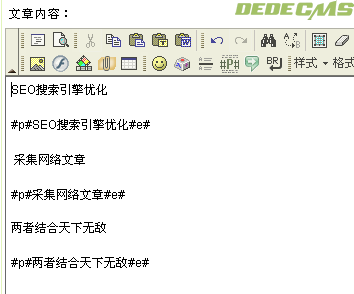下载下来解压后估计里面很多文件,其实有用的也就一个jquery.uploadify.js和uploadify.swf这两个文件。当然啦,jQuery库那是必须的。
在你使用的项目中,把jquery.uploadify.js引入以后,用法和大多数JQ插件一样。同时也要记得引入swfobject.js这个插件,版本2.2以上的。使用方法例如:
$(function() { $("#file_upload_1").uploadify({ height : 30, swf : '/uploadify/uploadify.swf', uploader : '/uploadify/UploadHandler.ashx', width : 120 });}); |
,上面的只是简单的事例,下面我就把我在项目中做的发出来,每个都有解释:file_upload_1其实也就是一个容器ID,比如
$(document).ready(function() { $("#file_upload").uploadify({ //开启调试 'debug' : false, //是否自动上传 'auto':false, //超时时间 'successTimeout':99999, //附带值 'formData':{ 'userid':'用户id', 'username':'用户名', 'rnd':'加密密文' }, //flash 'swf': "uploadify.swf", //不执行默认的onSelect事件 'overrideEvents' : ['onDialogClose'], //文件选择后的容器ID 'queueID':'uploadfileQueue', //服务器端脚本使用的文件对象的名称 $_FILES个['upload'] 'fileObjName':'upload', //上传处理程序 'uploader':'imageUpload.php', //浏览按钮的背景图片路径 'buttonImage':'upbutton.gif', //浏览按钮的宽度 'width':'100', //浏览按钮的高度 'height':'32', //expressInstall.swf文件的路径。 'expressInstall':'expressInstall.swf', //在浏览窗口底部的文件类型下拉菜单中显示的文本 'fileTypeDesc':'支持的格式:', //允许上传的文件后缀 'fileTypeExts':'*.jpg;*.jpge;*.gif;*.png', //上传文件的大小限制 'fileSizeLimit':'3MB', //上传数量 'queueSizeLimit' : 25, //每次更新上载的文件的进展 'onUploadProgress' : function(file, bytesUploaded, bytesTotal, totalBytesUploaded, totalBytesTotal) { //有时候上传进度什么想自己个性化控制,可以利用这个方法 //使用方法见官方说明 }, //选择上传文件后调用 'onSelect' : function(file) { }, //返回一个错误,选择文件的时候触发 'onSelectError':function(file, errorCode, errorMsg){ switch(errorCode) { case -100: alert("上传的文件数量已经超出系统限制的"+$('#file_upload').uploadify('settings','queueSizeLimit')+"个文件!"); break; case -110: alert("文件 ["+file.name+"] 大小超出系统限制的"+$('#file_upload').uploadify('settings','fileSizeLimit')+"大小!"); break; case -120: alert("文件 ["+file.name+"] 大小异常!"); break; case -130: alert("文件 ["+file.name+"] 类型不正确!"); break; } }, //检测FLASH失败调用 'onFallback':function(){ alert("您未安装FLASH控件,无法上传图片!请安装FLASH控件后再试。"); }, //上传到服务器,服务器返回相应信息到data里 'onUploadSuccess':function(file, data, response){ alert(data); } });}); |
上传后台处理程序UploadHandler.ashx:大体上常用的我想也就这些,至于后端处理上传部分,我这里就不多讲了,和普通的文件上传处理方式是一样的。
/// <summary> /// UploadHandler 的摘要说明 /// </summary> public class UploadHandler : IHttpHandler { public void ProcessRequest(HttpContext context) { try { context.Response.ContentType = "text/plain"; //接收上传后的文件 HttpPostedFile file = context.Request.Files["Filedata"]; //其他参数 //string somekey = context.Request["someKey"]; //string other = context.Request["someOtherKey"]; //获取文件的保存路径 //string uploadPath = HttpContext.Current.Server.MapPath("UploadImages" + "//"); string uploadPath = context.Request.Form["uploadPath"]; //没有指定上传路径,则使用默认路径 if (string.IsNullOrEmpty(uploadPath) || uploadPath == "") { uploadPath = string.Format("/upload/images/{0}/{1}/", DateTime.Now.Year, DateTime.Now.Month.ToString("D2")); } string fullUploadPath = HttpContext.Current.Server.MapPath(uploadPath); //判断上传的文件是否为空 if (file != null) { if (!Directory.Exists(fullUploadPath)) { Directory.CreateDirectory(fullUploadPath); } //文件名 string _filename = context.Request.Form["uploadFileName"]; //没有指定文件名,则生成一个随机文件名 if (string.IsNullOrEmpty(_filename) || _filename == "") { DateTime _temDT = DateTime.Now; //扩展名 string sExt = file.FileName.Substring(file.FileName.LastIndexOf(".")).ToLower(); //生成随机数 int digit = 6; Random _rnd = new Random(); string rnd = _rnd.Next((int)Math.Pow(10, digit), (int)Math.Pow(10, digit + 1)).ToString(); //文件名 _filename = string.Format("{0}{1}{2}", _temDT.Ticks.ToString(), rnd, sExt); } //保存文件 file.SaveAs(fullUploadPath + _filename); context.Response.Write(string.Format("{{/"code/":/"1/",/"msg/":/"上传成功/",/"filePath/":/"{0}/",/"fileName/":/"{1}/"}}", uploadPath + _filename, _filename)); } else { context.Response.Write("{{/"code/":/"0/",/"msg/":/"没有要上传的文件!/"}}"); } } catch (Exception ex) { context.Response.Write(string.Format("{{/"code/":/"0/",/"msg/":/"{0}/"}}", ex.Message)); } finally { context.Response.End(); } } public bool IsReusable { get { return false; } } } |



















